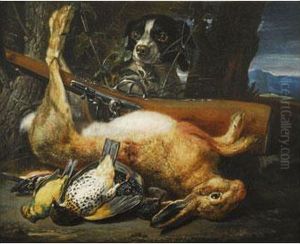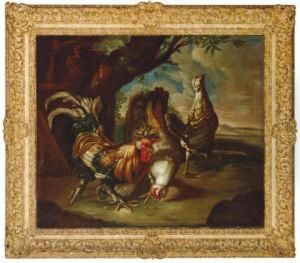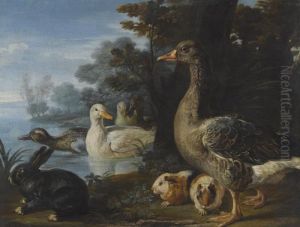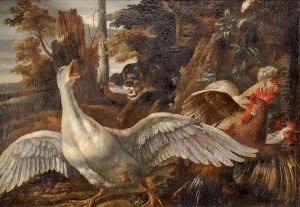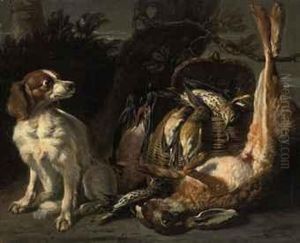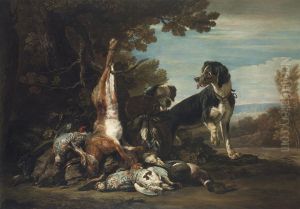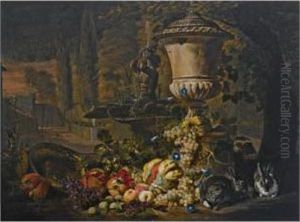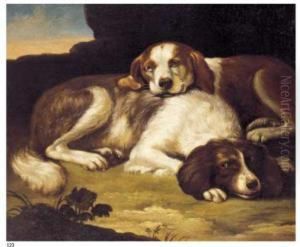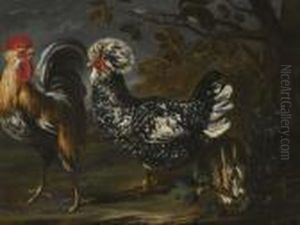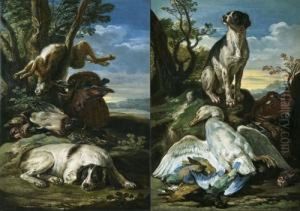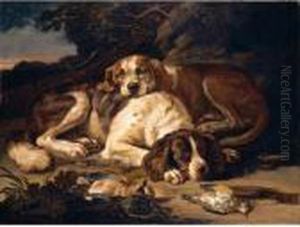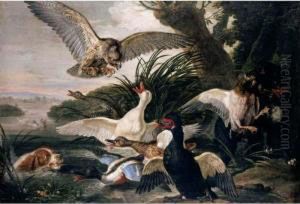David de Coninck Paintings
David de Coninck, or Coning, was a Flemish painter known for his exquisite still lifes and animal scenes. He was likely born in Antwerp around 1644, although some sources suggest his birthplace might have been Brussels. His exact date of birth is not documented, but his presence is noted in the Guild of Saint Luke in Antwerp in 1663, suggesting he was active as an artist by that time.
De Coninck studied under Pieter Boel, who was known for his animal paintings and was an influence on De Coninck's later works. Boel's influence is evident in De Coninck's attention to detail and the dynamic composition of his pieces. After his studies, De Coninck traveled to Rome, which was a common practice among artists of the time to further their education and exposure to different styles. His time in Rome is important as it helped him develop a more baroque style, which was prevalent in Italian art of the period.
Upon returning to the Low Countries, De Coninck focused on painting still lifes, including flowers and fruit, as well as hunting scenes, landscapes, and particularly animal scenes. His works often depicted animals engaged in a struggle for survival, which was a popular theme in the Baroque period. He showed a particular talent for rendering the textures and movements of animals, making his works popular among patrons.
David de Coninck's works were appreciated for their liveliness and the skill with which he captured the natural world. He became a member of the Guild of Saint Luke in Brussels in 1671 and remained active in the city for many years. The last known record of him dates to 1701, after which details of his life are obscure, including the date and place of his death. Throughout his career, De Coninck's works were collected by art connoisseurs and continue to be sought after by collectors and museums today, being regarded as fine examples of Flemish Baroque painting.









